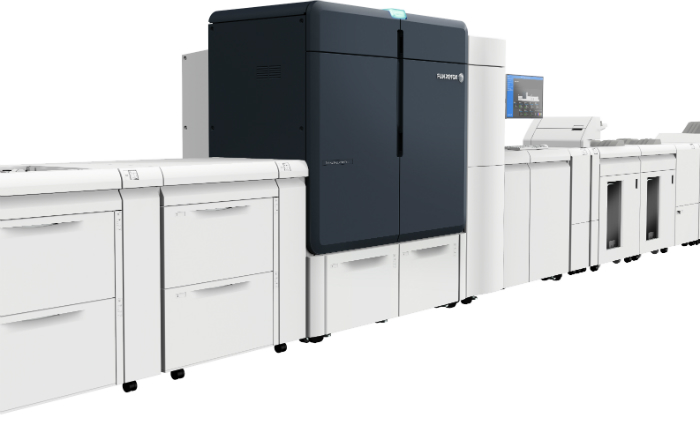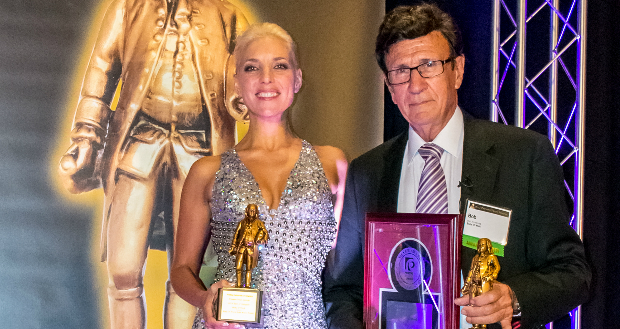
Printing Industries of America has picked 12 recipients for its 2018 InterTech Technology Award, one of the print industry’s most prestigious prizes.
The judges picked tech they deemed to be truly innovative, and expect to have a major impact on the industry. A mixture of software, and hardware made the cut, including EFI’s Nozomi press, the Heidelberg Primefire, MGI Jetvarnish 3D web, and Fuji Xerox (Xerox) Iridesse.
With the Iridesse, Judges pointed out that the press can lay down six colors in a single pass, including CMYK, gold, silver, or clear, with spot-on registration at 120 pages per minute. One said, “The fact that users can quickly swap ink positions makes its capability for producing stunning specialty effects even greater, super sharp images can be printed in Ultra HD resolution. It has innovative engineering and is able to do things that no other digital production press can do.”
In software, the winners include printQ 3D Packaging Design, by CloudLab, an ecommerce focused application which designs cartons and packaging products, with a 3D visualisation. One judge noted, “The user experience is impressive, I was able to design a box in a matter of minutes.”
The Rapida LiveApp, by press manufacturers Koenig & Bauer, allows users to control and schedule maintenance of Rapida sheetfed offset presses via a mobile device. The app lets operators start, stop, and make press adjustments when away from the console. Judges pointed to the maintenance feature that makes it easy to document issues and communicate them to Koenig & Bauer.
The other piece of software awarded is Circle PersonalEffect Edition, by XMPie, who come under the Xerox banner. It is used for designing, deploying, and measuring personalised omnichannel marketing campaigns, automating digital and print.
With the four/six colour EFI Nozomi C18000, the judges noted as one of the first presses designed to meet the requirements of corrugated production, the press is an innovative solution that will help converters capitalise on the demand for shorter-run, versioned, and variably imaged boxes.
The B1-size Heidelberg Primefire 106 was picked for its quality monitoring system, and use of the company’s existing press platform and prepress workflow, making it simpler to add into sheetfed pressrooms. It images seven colours at 12000 dpi, and reproduces 95 per cent of Pantone spot colours.
With the JETvarnish 3D Web, made by MGI Digital Technology, judges pointed to its ability to add stunning embellishment effects to labels and flexible packaging substrates via a digital narrow-web process.It can produce 2D/3D dimensional, tactile textures, and personalised, embossed foil in one pass without dies or expensive tooling, while a flexo primer coating unit and corona treatment station are integrated inline.
With the HP Indigo Pack Ready Lamination technology, judges pointed to more shorter run opportunities, as it creates a laminate film without the use of adhesives and the need for cure time, enabling immediate conversion to sealed pouches. The process uses a film with a heat-activated thermal active layer so that it bonds instantly to the HP Indigo ElectroInk printed layer.
Also honoured by the judges were the SpectroDens4 by Techkon; ScreenPro by Global Graphics Software, Anti-Fluting Plate Technology for Corrugated by MacDermid Graphics Solutions, and 4-Step Sleeking Process by Nobelus.
Comment below to have your say on this story.
If you have a news story or tip-off, get in touch at editorial@sprinter.com.au.
Sign up to the Sprinter newsletter


